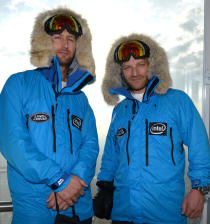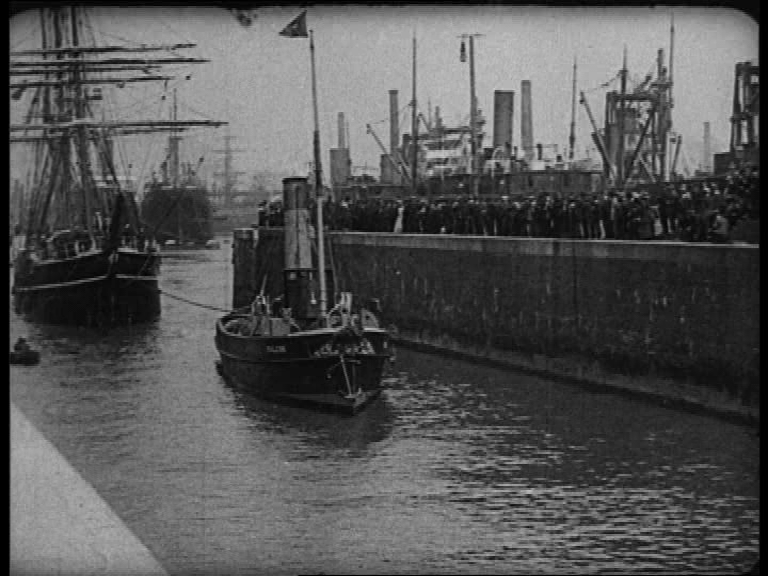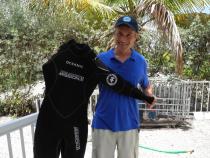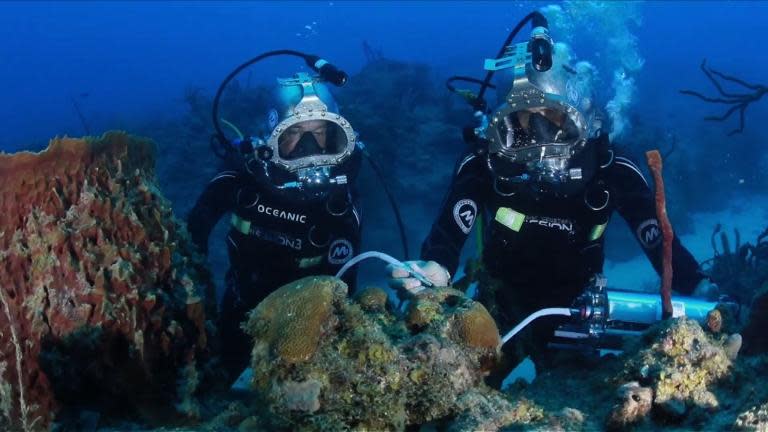 Rob Waugh
Rob WaughThe Modern Pioneers Pushing Boundaries On Earth And Beyond
We talk to three explorers forging new paths in space, on Earth and beneath the sea.
Man has explored much of Earth’s surface, but the unknown still surrounds us. So far we have only explored 5% of the oceans on our own planet.
Beyond Earth, we have explored very little indeed. It has been 42 years since someone last set foot on the Moon.
Even on our own planet, there are still feats no one has ever completed without aid.
Below are three pioneers pushing the boundaries, on Earth, beneath the waves, and in space.
[The Most Surprising Hollywood Cameos in Gaming History]

Ben Saunders and Tarka L’Herpiniere
Where they went: South Pole
What they did: 105-day trek on foot
World records: First team to walk the length of Captain Scott’s journey
“It was like being on a treadmill on a freezer looking at a white wall for 13 hours a day. It was flat white, with no mountains and no scenery: there was nothing to hold onto,” said polar explorer Ben Saunders, 38.
Saunders was half of a British team which completed the doomed Antarctic journey of Captain Scott on foot earlier this year.
Saunders’ team took 105 days to trek on foot to the South Pole. Saunders and his companion, explorer and athlete Tarka L’Herpiniere did the equivalent of 69 marathons back to back, 1795 miles in total.
Polar veteran Saunders blogged 109 times on his journey to the pole. As he sat up into the night writing, he said he felt an ‘affinity’ with Scott, whose diary chronicled the expedition right up to its failure and his own death.
“Part of the Scott’s story that far fewer are aware of, is that his journey has never been completed,” Saunders says. “Scott and his travelling companions died 11 miles from their largest food depot, and just 100 miles from their goal. The story of this unfinished journey is one that gripped me all my adult life. How come this journey has never been finished?”

"We were doing something no athlete would do. We had three rest days in 100. I was personally interested in the human boundaries,” Saunders said, “We were genuinely entering new territory. We worked for ten years on the training and on the nutrition. We are not scientists, but our data is being analysed. There’s a lot of information that may be useful for space exploration.”
The team had to call for resupply by air as they ran low on food while still 45 miles from the closest supply dump. Saunders says that he does not know whether it’s possible to make the journey without assistance.

After having called for resupply, Scott says that he became aware of the difference between his and Scott’s expeditions: “They had no lifeline. They might as well have been on Pluto. They were so far from home. They were skiing for their lives.”

Fabien Cousteau
Where he went: Aquarius lab, 66ft beneath the surface, Florida Keys
What he did: Stayed 31 days
World records: Beat his grandfather’s record for longest time underwater with a film crew
“We spend 100 times more on exploring space than we do on exploring our own ‘inner space’, the oceans,” says Fabien Cousteau, grandson of underwater filmmaker Jacques. “We have only explored 5% of the world’s oceans in total.”
In the Sixties, Jacques Cousteau became a household name with films such as ‘The Silent World’, and diving feats such as staying underwater with a film crew in a pressurised container for 30 days. He was the inventor of Scuba diving.

This year, Fabien beat his record. He led a team of five ‘aquanauts’ who stayed underwater inside a metal box for 31 days, breathing air at the same pressure as the surrounding ocean, just as his grandfather did, and swimming in diving suits for nine hours a day.
Cousteau says that during his team’s 31 days in Aquarius, a lab 66ft below the surface in the Florida Keys, they gathered as much scientific data as would be gathered in two years of surface diving.
Cousteau, who is a documentary maker, like his grandfather, says, “My grandfather used to say, ‘In order to study fish you have to become a fish.’”

The Aquarius lab is frequently used by NASA to prepare astronauts for space missions.
It is one of the only such underwater labs left on Earth.
Even space explorers don’t stay as long as Cousteau did. He says he hopes his adventure inspires others to explore the deep. Cousteau says that cures for illnesses such as cancer may be lurking in the depths, and we ignore the sea at our peril
“I think space exploration inspires the imagination,” he says.
“But inner space is a constant firework display. You will always see something different on each dive."
"What my grandfather helped me to understand is that the ocean is the circulatory system of our own planet."
"He gave me an insatiable curiosity about what is down there.”
Bas Lansdorp
Where he’s going: He’s CEO of a firm that aims to put people on Mars
What he’s done: Recruited 350 volunteers for a one-way mission in 2025
World records: No human has ever been to Mars
“In principle, getting humans to Mars is possible now,” says Bas Landsdorp of Netherlands firm Mars One, which aims to start a colony on Mars in 2025. “Our plan involves a space journey that’s pretty much the same as ones astronauts have already done on the International Space Station: seven months.”
“We received more than 8,000 emails from over 100 countries, volunteering for our astronaut selection programme,” says Lansdorp. That number has been whittled down to 350 who are fit enough, physically and mentally, to make the journey.
All of them know that the trip to Mars is one way. There is no way to come back once the lander has touched down on Mars.
Mars One’s plan would include robotic missions to find the perfect location for a colony, then a NASA-style robotic rover which would build the foundations.
“Before we send humans there, a second rover will fly,” says Lansdorp. “The robots will ensure there is oxygen, breathable air and water. Then our first pair of colonists will depart.”
Despite setbacks (such as an Indiegogo campaign which fell just short of the funds required for a robotic lander), Lansdorp has been in negotiation with firms such as Lockheed Martin, and is seeking further private investment.
Mars One also aims to raise money through television events, with a reality TV show following the wannabe explorers from selection through training to their first steps on the Red Planet. One of the founders of the company is Paul Romer, formerly of Endemol, the creators of ‘Big Brother’.
“Our challenge is that we have to get investment up front,” says Lansdorp. “We estimate it will cost $6 billion to get the first two colonists to Mars, then $4 billion per pair thereafter. But the whole world will be watching. The revenue from the Olympics was $1 billion per week. This will be bigger. It will be the first time humans actually leave the Earth.”

 Yahoo News
Yahoo News 